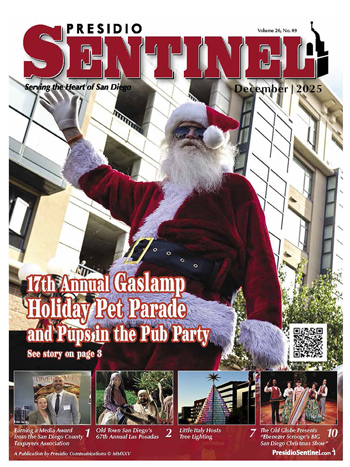More Bad News Coming from Sacramento on the Housing Industry
Stop SB 79
Scott Wiener, the senator representing San Franciso and San Mateo, who has a negative reputation of working to forever change the housing market in the State of California, is at it again. He has introduced SB 79, which was recently narrowly passed by the Senate. Now it is going to the Assembly.
To help explain this bill, I am referring to Neighbors for a Better San Diego, which consists of residents throughout the City of San Diego, who study these issues and provide logical and rational reasoning to what is coming from Sacramento without community input.
Neighbors for a Better San Diego (NFABSD) strongly opposes SB 79 (Wiener) for the reasons stated below. As noted, some of NFABSD’s objections arise from the specific conditions of San Diego, while others apply to all California cities. NFABSD objections are specifically directed to Section 2 of the bill, which proposes to add a new Chapter 4.1.5 (Transit-Oriented Development) to Division 1 of Title 7 of the Government Code. To summarize our objections:
• San Diego, like other California cities, is ahead of production goals for market rate housing. Therefore, SB 79 doesn’t address a statewide concern.
• Lower income households are squeezed by the demolition of naturally occurring affordable housing (NOAH) to make way for new premium rent high rises.
• Undermines and conflicts with local planning efforts that are much more precise in identifying and zoning areas for transit-oriented development.
• Due to the indiscriminate one-half mile distance from transit, SB 79 would create out-of-scale developments in single-family neighborhoods that lack the public infrastructure and commercial amenities needed to reduce automobile dependence.
• Doesn’t clearly specify that the method of measuring distance is walking distance along a public path of travel.
• Bases transit stops on future transit plans that may never happen.
• The footprint of SB 79 is too diffuse to achieve population densities needed to support transit adoption and commercial corridors.
• Sabotages local efforts to provide affordable housing by overriding inclusionary affordable housing requirements.
• Demolishing existing affordable units doesn’t p promote sustainability or affordability These objections are detailed below.
The premise of SB 79 is that building market rate homes will somehow address the housing affordability challenges faced by moderate and low income households. The experience of San Diego contradicts this assumption. As a result of various factors, including streamlining project approvals and reducing affordable housing requirements, San Diego has seen a boom in new market rate housing development over the last several years, to the extent that San Diego is now ahead of its annualized above market rate housing targets for the current RHNA cycle.
However, while rents have softened at the high end of the market, lower income households have not benefited and continue to be rent challenged. The Fallacy of Filtering Lower income households are further squeezed by the demolition of naturally occurring affordable housing (NOAH) to make way for new premium rent high rises. Because of weak replacement unit and inclusionary housing requirements, market rate projects, such as the developments promoted by SB 79, often result in fewer deed-restricted affordable units than were provided by the demolished housing. Thus, families whose homes are demolished to make way for new market rate projects find themselves not only dealing with the stress of being displaced from their homes but also competing for new housing in a shrinking market for homes they can afford.
San Diego has done extensive work through its recent general plan update (Blueprint SD) to model areas of the city that would be the most supportive of transit adoption. The resulting transit propensity map is now being used as the basis for community plan updates that intend to put higher density developments near transit, often at densities exceeding those proposed by SB 79. These community plan updates are substantial, typically doubling the housing capacity of a community.
At the same time, the footprint of San Diego’s highest propensity areas is much smaller than what would be created by SB 79, which means that future development will be concentrated, creating the synergistic density needed to create transit destinations and walkable, sustainable communities. SB 79 undermines this planning because it would randomly distribute new development across San Diego, thereby reinforcing San Diego’s dependence on automobiles for daily activities.
I encourage you to reach out to your local assembly person to share your concerns about this detrimental new bill that has serious negative impacts on the San Diego housing market.
CA State Assembly members who represent residents in San Diego County are:
District 76 Dr. Darshana R. Patel
District 79 Dr. LaShae Sharp-Collins
Category: feature, Government, Housing, Local News







